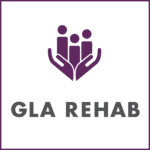Multiple Errands Test (MET)
Multiple Errands Test (MET)

Executive functioning involves the ability to plan and reason, organize, decision making, problem solving, task flexibility and execution.
The Multiple Errands Test (MET) evaluates executive function deficits on every-day tasks. It incorporates a number of “real-world” tasks in a community setting such as negotiating the grocery store or department store, following a grocery list and making reasonable decisions based on grocery cost.
The MET was developed by Shallice and Burgess in 1991 and it was intended to evaluate an individual’s ability to organize simple tasks while following simple rules. It was initially only used in a hospital setting and then expanded to within the community.
There are currently several versions of the MET including the Hospital Version and Baycrest Version, a small shopping plaza Simplified Version and virtual reality environment Virtual Version.
At GLA, we have created our own version of the MET within the community, either at a familiar grocery store or mall. The client is asked to complete a various number of simple tasks while following a set of rules. Within the assessment, the OT is observing how the individual carries out the tasks and whether there are any inefficiencies, rule breaks, or task failures.
As it is not a standardized assessment, the OTs are using the assessment purely from an observation perspective.
It allows the OTs to determine how the client is able to follow a set of instructions, organize and make decisions, while negotiating the community.
Cognitive assessments are often completed in the comfort of one’s home, where there are no distractions present. However, real life is full of distractions and in order for the OT to get a complete picture of how the client is functioning, they need to be assessed outside of their home.
Completing this assessment as part of our thorough Cognitive Assessment Report is unique to GLA and helps our OTs determine difficulties experienced by the client with regards to independent living. It can also assist with improving awareness with clients lacking insight into their problems as it is done in real life situation.
The OT can use the results of the MET in order to support attendant care benefits and occupational therapy treatment.
The MET demonstrates how executive dysfunction impacts everyday activities, evaluates function in a range of real-life activities. It is simple to administer.
There are some disadvantages of using the MET including the fact that
- It is difficult to administer with people who have mobility issues
- Familiarity with the context of the test may skew the results
To learn more about the MET or other assessments used at GLA, please contact us. We would be happy to provide you with more information.

